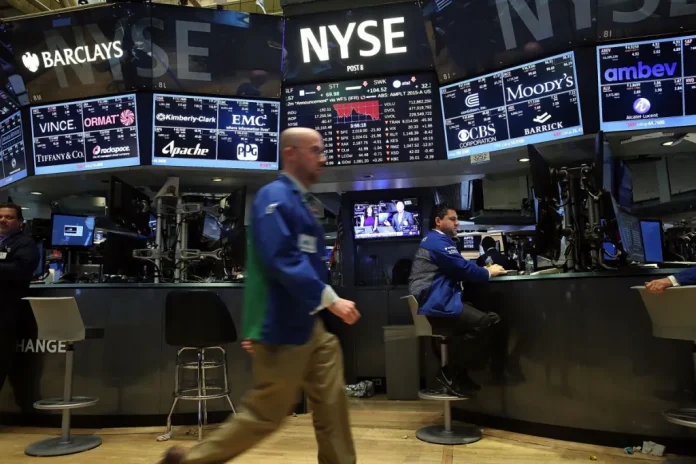Poor seasonality looks like it came earlier this year. We are still in April while a famous market adage is saying “sell in May and go away”. But is this a real thing? Are investors selling in May and are going away? Well, the statistics are showing a weakness of markets during May and end of October but this is not absolute, writes eToro analyst for Romania, Bogdan Maioreanu.
eToro looked at the monthly price returns for 15 of the world’s largest stock indices, going back an average of 50 years to test whether stocks truly underperform during the period from May to October as the adage implies. And they did (see Chart 1). While the monthly average price return across all 15 markets from November to April is 1.2%, with no negative months, this falls to just 0.1% from May to October, with three months averaging negative returns. This seasonality difference is seen individually across all 15 markets examined, with not a single market experiencing strong returns over the summer.
Believe it or not, “Sell in May and Go Away” didn’t originate on Wall Street but in London’s financial district. The original phrase was “Sell in May and go away, come back on St. Leger’s Day,” with the latter event referring to a horse race. But with time this was reduced to only “Sell in May”. Established in 1776, the St. Leger Stakes is one of the most well-known horse races in England, taking place in September of every year. In its original context, the adage recommended that British investors, aristocrats, and bankers should sell their shares in May, relax and enjoy the summer months while escaping the London heat, and return to the stock market in the autumn after the St. Leger Stakes. In the U.S., some investors have adopted a similar strategy by refraining from investing during the period between Memorial Day in May and Labor Day in September.
But why is this famous adage still relevant in the modern era of investments? This weak stock market seasonality is well-supported by the data (see Table 1). And is even bigger globally than in the US.
There are multiple factors contributing to this seasonal trend. There is often positive company guidance on the full year outlook seen in Q1, boosting share prices. We also see a lot of investors reposition portfolios in Q4 in preparation for the upcoming year and the well-established January price effect. Summer months lack these positive influences, alongside generally lower trading volumes. This seasonality is even seen in Australia, reflecting the increasing globalisation of equity markets.
The Italian FTSE MIB and the mid-cap index UK FTSE 250 experienced some of the highest average seasonal return differences with 1.8% and 1.7%, respectively. In contrast, some major US indexes, whose price swings are generally less extreme than the global average, have experienced smaller seasonal return differences, such as the S&P 500 (0.78%), the NASDAQ (0.76%) and the Wilshire small-cap index (0.96%).
Table 1: Shows average monthly price return across 15 indices going back an average of 50 years
| Index | Average monthly return in May – October | Average monthly return in November – April | Difference |
| ITALY FTSE MIB | -0.71% | 1.08% | 1.80% |
| FRANCE CAC-40 | -0.24% | 1.54% | 1.78% |
| UK FTSE 250 | -0.14% | 1.56% | 1.70% |
| HONG KONG HSENG | -0.15% | 1.43% | 1.58% |
| JAPAN NIKKEI 225 | -0.19% | 1.25% | 1.44% |
| SPAIN IBEX | -0.13% | 1.14% | 1.27% |
| GERMAN DAX | 0.05% | 1.22% | 1.16% |
| UK FTSE 100 | -0.04% | 1.09% | 1.14% |
| CANADA TSX | 0.07% | 1.14% | 1.07% |
| US WILSHIRE SMALL CAP | 0.37% | 1.33% | 0.96% |
| AUSTRALIA ASX200 | 0.06% | 0.89% | 0.83% |
| US S&P 500 | 0.27% | 1.05% | 0.78% |
| US NASDAQ COMPOSITE | 0.68% | 1.44% | 0.76% |
| SWISS SMI | 0.26% | 0.91% | 0.65% |
| KOREA KOSPI | 0.26% | 0.91% | 0.65% |
| Average | 0.09% | 1.20% | 1.11% |
| Source: Refinitiv | |||
*Past performance is not an indication of future results.
If we are looking at the Romanian market, the situation is similar (see Chart 2). We are seeing the same seasonality. Between 1998 to 2023, from May to October the BET Index returned almost 0.9%, while the period from November to April returned on average almost double or 1.74%.
After a six-month period of remarkable strength, the US stock market has experienced a notable recent downturn, fundamentally driven by delayed US interest rate cut expectations. But another factor might have been the investors well aware that weaker ‘Sell in May and go away’ seasonality is just around the corner. We see this all as a needed pause for breath in the early innings of a new bull market.
_
_

















